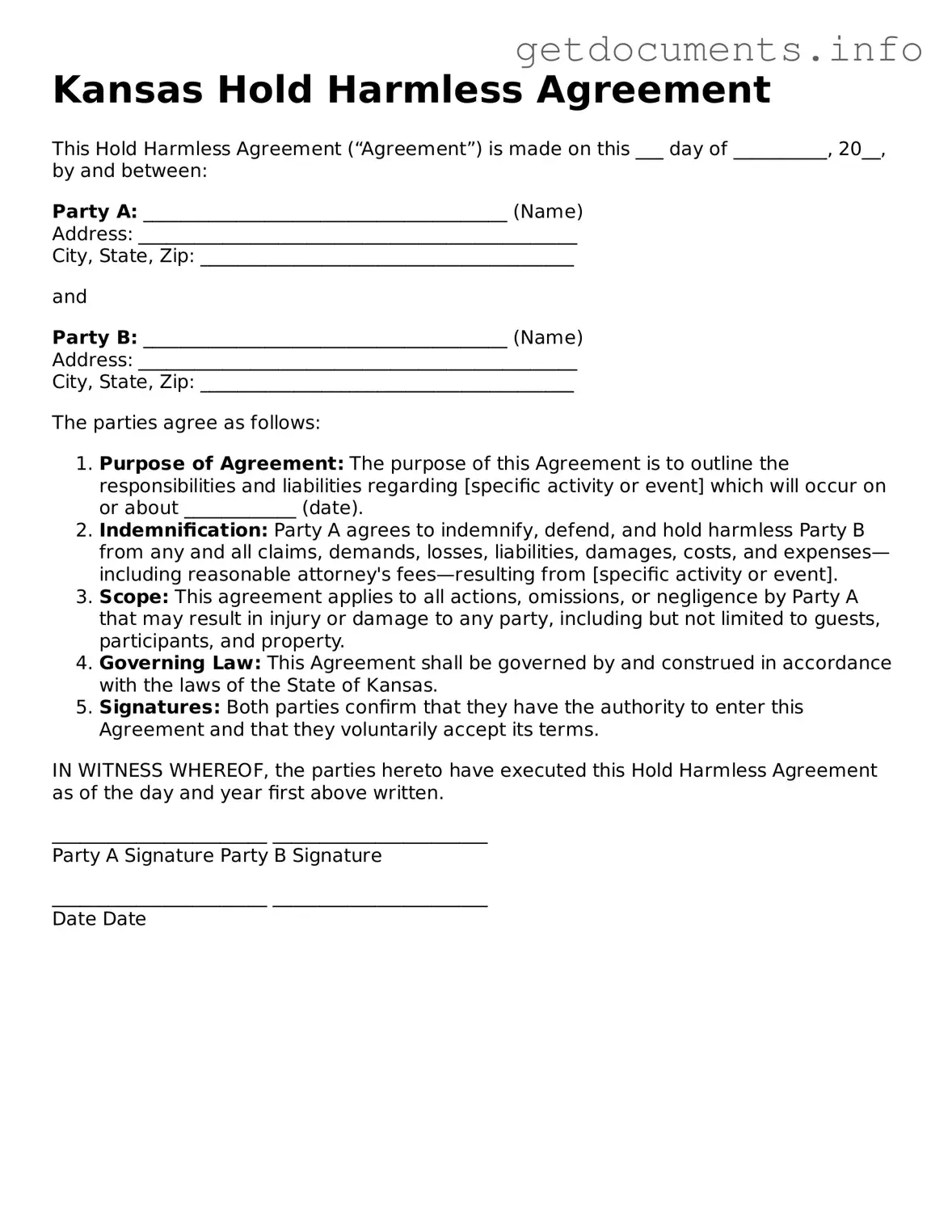Free Hold Harmless Agreement Template for Kansas
The Kansas Hold Harmless Agreement is a legal document designed to protect one party from liability for certain actions or events. This agreement is commonly used in various contexts, including rental agreements and event planning, to ensure that one party will not hold the other responsible for potential damages or injuries. Understanding this form is essential for anyone looking to navigate agreements safely and responsibly.
Ready to take the next step? Fill out the form by clicking the button below.
Access Hold Harmless Agreement Editor
